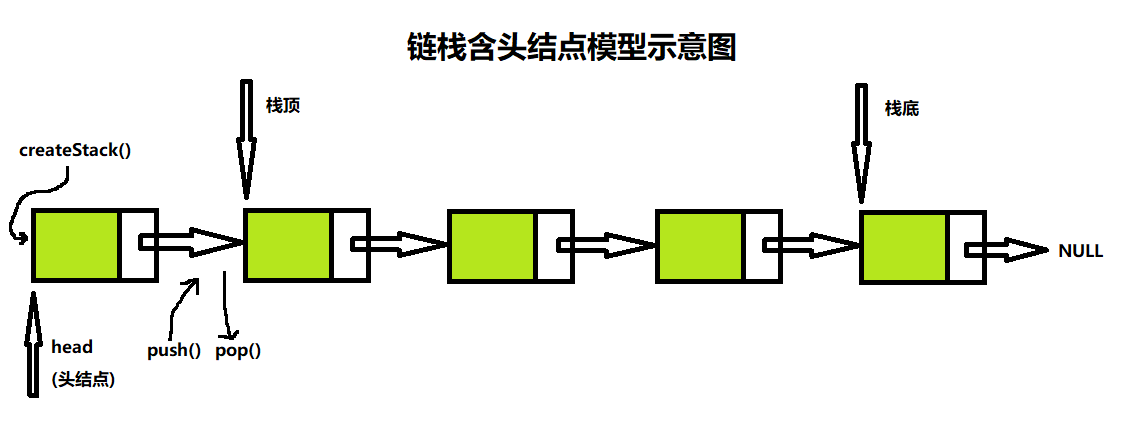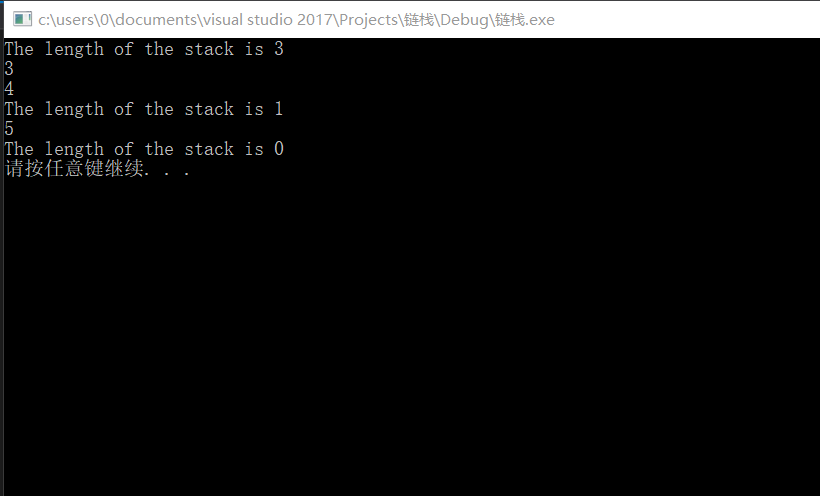1. 链栈含头结点模型示意图如下:

2. 链栈结构定义如下:
struct StackNode {
int data;
StackNode* next;
};
3. 链栈的基本操作函数如下:
- StackNode* createStack(); // 创建栈头结点
- void Push(StackNode* head, int item); // 入栈
- int Pop(StackNode* head); // 出栈,并返回出栈数据
- int getStackLength(StackNode* head); // 获取栈元素个数
4. 具体代码实现如下:
#include <iostream>
using namespace std;
// 结点结构
struct StackNode {
int data;
StackNode* next;
};
// 创建栈头结点
StackNode* createStack() {
StackNode* head = (StackNode*)malloc(sizeof(StackNode));
if (head == NULL) {
cout << "Memory allocate failed." << endl;
return NULL;
}
head->data = 0;
head->next = NULL;
return head;
}
// 入栈
void Push(StackNode* head, int item) {
if (head == NULL) {
return;
}
StackNode* node = (StackNode*)malloc(sizeof(StackNode));
if (node == NULL) {
cout << "Memory allocate failed." << endl;
return;
}
node->data = item;
node->next = head->next;
head->next = node;
}
// 出栈
int Pop(StackNode* head) {
if (head == NULL || head->next == NULL) {
cout << "Error." << endl;
return 0;
}
StackNode* node = (StackNode*)malloc(sizeof(StackNode));
if (node == NULL) {
cout << "Memory allocate failed." << endl;
return 0;
}
StackNode* temp = head->next;
head->next = temp->next;
int val = temp->data;
free(temp);
return val;
}
// 获取栈元素个数
int getStackLength(StackNode* head) {
if (head == NULL || head->next == NULL) {
return 0;
}
StackNode* p = head->next;
int len = 0;
while (p != NULL) {
len++;
p = p->next;
}
return len;
}
int main() {
StackNode* head = NULL;
head = createStack();
Push(head, 5);
Push(head, 4);
Push(head, 3);
cout << getStackLength(head) << endl;
cout << Pop(head) << endl;
cout << Pop(head) << endl;
cout << getStackLength(head) << endl;
cout << Pop(head) << endl;
cout << getStackLength(head) << endl;
system("pause");
return 0;
}
5. 运行结果截图如下:






